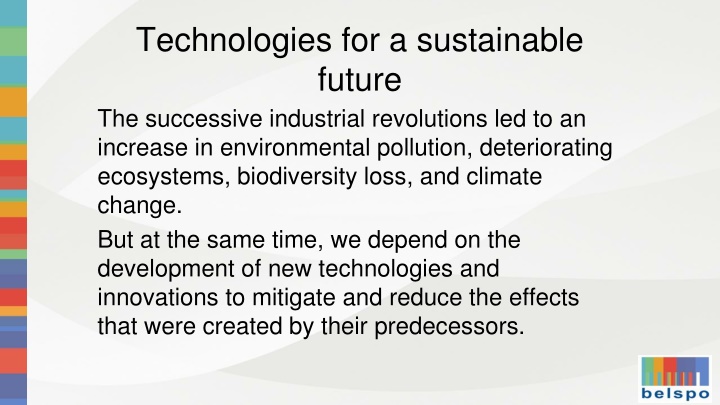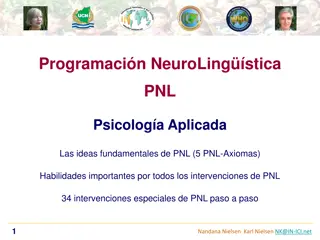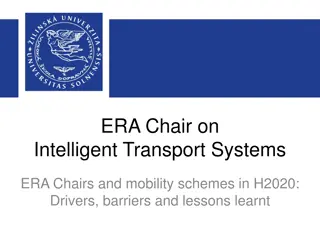
Technological Innovations for a Sustainable Future and Society
Explore the impact of successive industrial revolutions on our environment and society, and the role of new technologies in mitigating these effects. Discover the relationship between technology, productivity, and societal progress, along with new approaches to address challenges. Delve into critical questions about the influence of technology on our future and the need for democratic control.
Download Presentation

Please find below an Image/Link to download the presentation.
The content on the website is provided AS IS for your information and personal use only. It may not be sold, licensed, or shared on other websites without obtaining consent from the author. If you encounter any issues during the download, it is possible that the publisher has removed the file from their server.
You are allowed to download the files provided on this website for personal or commercial use, subject to the condition that they are used lawfully. All files are the property of their respective owners.
The content on the website is provided AS IS for your information and personal use only. It may not be sold, licensed, or shared on other websites without obtaining consent from the author.
E N D
Presentation Transcript
Technologies for a sustainable future The successive industrial revolutions led to an increase in environmental pollution, deteriorating ecosystems, biodiversity loss, and climate change. But at the same time, we depend on the development of new technologies and innovations to mitigate and reduce the effects that were created by their predecessors.
Timeline CO2emissions by world region
Technologies for an affluent society for everyone Technological progress can have positive and negative effects on the labor market. Distinction between the short and long run During the early phases of the first industrial revolution -> working conditions and wages for factory workers declined. It was only in the long run (especially during the second industrial revolution) that middle-class societies became the norm in the Western world
Relation to productivity New technologies and innovations -> no immediate effect: it may take several decades to materialize. Productivity gains become apparent when organizational adjustments are made. Relation between productivity and real wages Labor-replacing and labor-enabling technologies Growing concern over the impact of AI
The context is essential Acceptance or resistance to new technologies is always related to the social context - industrial workers in the middle of the 19th century had a pessimistic view on technologies - the 50 s and 60 s, Solow growth model, society was reaping the benefits of new innovations. People were optimistic about the impact of technology on their lives.
New approaches Taxation of robots, investment in retraining, promotion of STEM education, wage insurance, Development of new norms to measure the performance of businesses (ESGs to evaluate credit worthiness), extend guarantees to fight programmed obsolescence, circular economy, New modes of funding (focus on SDGs) Alternative economic models: degrowth models
Future critical questions Is there too much techno-optimism? -> who/what determines the narrative behind it. Do we need to place technology more under democratic control? Should technological progress be directed toward more human-enhancing productivity growth (more worker-machine complementarity)?






















